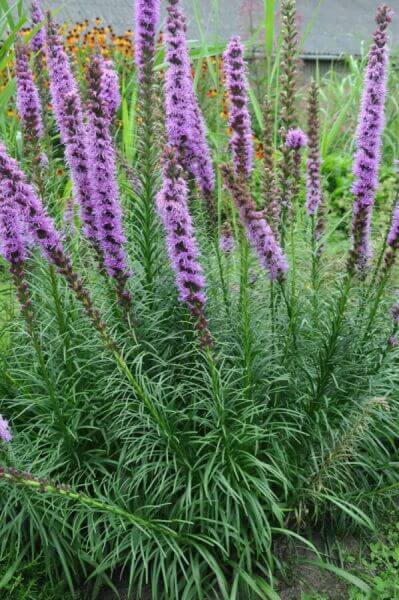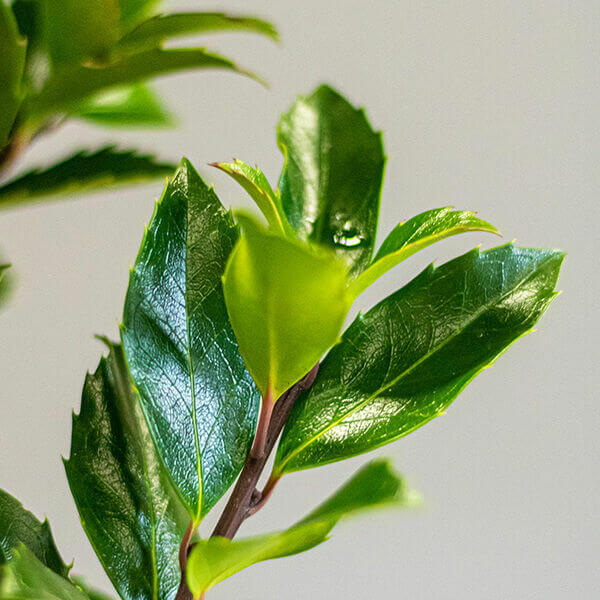Hedge Plants For Year-round Privacy
Enhance your garden's appeal with rich hedge ranges such as Yew (Taxus), Thuja, Laurel, Photinia, and Bamboo, celebrated for their structural stability and environmental advantages.
Yew and Thuja supply evergreen coverage and winter season resilience, while Laurel provides quick growth and broad, fragrant leaves.
Photinia includes seasonal charm with its dynamic red foliage, and Bamboo provides a low-maintenance, serene ambiance.
These hedges enhance air quality, reduce noise, and produce tranquil, personal spaces.
Appropriate planting, spacing, and upkeep ensure vigorous growth and eco-friendly harmony.
Explore how these rich ranges can elevate your garden's charm and wellness.
Secret Takeaways
Change Your Garden With Lush Hedge Varieties
- Select Yew for its dense, evergreen growth and exceptional durability.
- Opt for Laurel for its fast growth and broad leaves, guaranteeing fast personal privacy.
- Choose Photinia for its dynamic seasonal foliage, which turns a striking dark red.
- Use Bamboo for a low-maintenance, winter-hardy hedge with visual appeal.
- Area plants 2-3 per meter and prune frequently for optimum growth and health.
Popular Hedge Plants
When transforming a garden with lush hedge varieties, it's necessary to consider popular hedge plants such as Yew, Thuja, Laurel, and Photinia due to their distinct qualities and benefits.
Yew (Taxus) is highly esteemed for its longevity and dense, green development, making it a prime choice for enduring landscapes.
Thuja is noted for its evergreen foliage and robust winter season strength.
Photinia includes seasonal vibrancy with red leaves that darken with time, developing vibrant visual appeal.
Laurel uses fast growth and fragrant, broad leaves, ideal for quick personal privacy.
In Addition, Bamboo is an exceptional option for ambiance, offering a low-maintenance, winter-hardy option that boosts the garden's aesthetic with its classy, swaying walking canes.
These choices accommodate a variety of horticultural needs and choices.
Advantages of Garden Hedges
Garden hedges offer a wide range of benefits, making them an important addition to any landscape. These natural barriers are economical to implement and supply substantial wind security, enhancing air blood circulation and contributing to noise decrease. The dense foliage of hedges like Thuja and Beech makes sure personal privacy by obstructing presence, producing a remote and serene environment.
Hedges likewise play an essential function in microclimate policy, providing a steady environment that fosters plant development and minimizes temperature level fluctuations. Their detailed leaf structures filter contaminants, enhancing air quality and contributing to a much healthier garden ecosystem.
Furthermore, hedges excel in sound reduction, soaking up and deflecting sound waves to lower ambient sound levels. This dual functionality of supplying both visual and acoustic personal privacy enhances the general harmony and aesthetic appeal of any garden.
Planting and Upkeep Tips
For an effective hedge, meticulous preparation of the planting location is vital. Ensure the soil has appropriate pH and drain to support strong root development.
Space the plants properly for the picked species. Water the hedge often throughout its preliminary growth phase, adjusting as required with seasonal modifications.
Implement a methodical insect control and illness prevention strategy, using chemical or natural treatments when necessary. Regularly examine for aphids, termites, and fungal infections.
Apply mulch to maintain wetness and reduce weeds. Seasonal pruning promotes dense growth and air circulation, important for plant health.
Following these standards will assist you cultivate a lively, properly maintained hedge that boosts the beauty of your garden.
Spacing and Trimming Guidelines
Spacing and Trimming Guidelines
Proper spacing and trimming are crucial for cultivating healthy, visually appealing hedges. Adequate spacing ensures each plant receives sufficient nutrients, light, and airflow.
Follow these guidelines for optimal hedge upkeep:
- Spacing: Position hedge plants 2-3 plants per meter to motivate robust development.
- Pruning Strategies: Routine pruning is vital for preserving preferred hedge height and shape. Trim new growth in summer season and cut down older wood throughout winter season.
- Seasonal Care: Adjust trimming schedules and methods according to seasonal requirements to make sure plant health.
- Hedge Height: Frequently display and cut to keep the desired hedge height and accomplish uniform aesthetic appeals.
Adhering to these steps will guarantee your hedge prospers, improving both the appeal and functionality of your garden.
Choosing the Right Hedge
Picking the Right Hedge
Choosing the appropriate hedge includes examining elements such as mature height, foliage density, and ecological durability. Successful hedge plant choice requires comprehending each types' growth attributes and site-specific versatility.
For example, Yew (Taxus) provides excellent durability and dense development, while Thuja is noteworthy for its winter durability. Additionally, thinking about maintenance requirements is important; fast-growing species like Laurel or Privet need regular cutting, whereas low-maintenance choices like Bamboo or Ivy may be more suitable for those looking for minimal maintenance.
Environmental elements such as soil type, light availability, and wetness conditions should also assist the selection procedure. This careful method makes sure the chosen hedges will prosper, providing both functional and aesthetic advantages to the garden landscape.
Delivery and Planting Guidance
To guarantee your hedge plants thrive, they ought to be provided by specialized carriers and planted quickly upon arrival.
Follow these vital actions for successful planting:
- Soil Preparation: Enrich the soil with raw material to enhance drain and nutrient content.
- Planting Depth: Create a trench twice the width and equivalent to the depth of the root ball.
- Watering Strategies: Water thoroughly after planting, keeping the soil consistently damp however not filled.
- Mulching: Use a layer of mulch to maintain moisture and suppress weeds.
Customer Support and Service
Provided the important function of timely support in horticultural pursuits, our consumer support team is offered six days a week through telephone, e-mail, and social networks to use skilled suggestions and swiftly address any concerns. Their dedication to quick response times ensures customer complete satisfaction by dealing with inquiries associated with plant health, ideal planting techniques, and maintenance schedules.

-----------------
Within 48 hours
This comprehensive support group, strengthened by an excellent 9.3/ 10 consumer rating, highlights our commitment to enhancing the gardening experience for each customer.
Often Asked Concerns
The Length Of Time Does It Consider Hedge Plants to Develop?
Hedge plants usually need one to 3 years to end up being fully established, with the exact period differing by types and growing conditions.
Reliable care throughout this vital duration is vital for robust development. Consistent watering, watchful weed control, and appropriate fertilizer application are essential in promoting strong root development.
For example, fast-growing types like Laurel may develop quicker, while slower-growing ranges such as Yew may take longer. Persistent maintenance accelerates the establishment procedure, leading to healthy and dense hedges.
What Are the Best Hedge Plants for Privacy?
The concern of the finest hedge plants for personal privacy includes examining evergreen and deciduous choices.
Evergreen hedges like Thuja, Laurel, and Cypress offer year-round coverage, ensuring constant privacy.
In contrast, deciduous hedges such as Beech use seasonal personal privacy, shedding leaves in chillier months.
Key upkeep ideas for privacy hedges include routine trimming, fertilizing in spring, and proper spacing-- normally 2 to 3 plants per meter.
Furthermore, consistent watering and thorough weed removal are crucial for promoting healthy, thick growth.
Can Hedge Plants Bring In Wildlife to My Garden?
Yes, hedge plants can draw in wildlife to your garden by providing necessary benefits like shelter, food, and nesting websites, thereby boosting local biodiversity. Yew, holly, and laurel are outstanding for attracting birds, while ivy supports a variety of pests.
However, it's important to note that there are some downsides, such as increased maintenance to handle pests and routine maintenance. Carefully picking and maintaining hedge varieties can assist balance these drawbacks and advantages, ultimately promoting a sustainable and vibrant community in your garden.
Exist Any Flowering Hedge Plants Available?
Yes, there are flowering hedge plants offered that can boost the beauty of your garden.
For example, Elaeagnus, likewise referred to as Olive Willow, produces fragrant white flowers in the fall, adding a touch of sophistication.
Photinia, another popular option, showcases vibrant red leaves that mature into a rich green, developing a vibrant visual effect throughout the seasons.
To ensure these plants flourish, it's vital to practice correct pruning techniques and seasonal maintenance, such as trimming new development in the summer season and cutting down in the winter season.
These measures will help preserve the health and aesthetic appeal of your blooming hedges.
How Do I Avoid Insects in My Hedge Plants?
To avoid bugs in hedge plants, use natural bug control techniques and keep proper hedge care. Introduce advantageous bugs like ladybugs, which take advantage of hazardous insects, to produce a balanced community.
Routinely examine your hedges for signs of infestation and quickly eliminate any affected parts to prevent the spread. Ensure the health of your hedges by applying balanced fertilizers and supplying appropriate water.
Make use of mulching to keep soil moisture and proper spacing to lower plant tension and promote robust development. These practices jointly help in reducing pest issues and keeping a healthy hedge.
Conclusion
In essence, picking the best read more hedge varieties such as Yew, Thuja, and Laurel can transform any garden into a tranquil haven. These plants offer year-round greenery, enhance aesthetic appeal, and deal useful benefits like noise decrease and wind security.
Proper planting strategies, precise spacing, consistent watering, and seasonal cutting are essential for ideal growth.
Reliable shipment services and professional customer assistance guarantee a seamless experience from purchase to planting, making it easier than ever to elevate your outside space.
Garden hedges use a wide variety of benefits, making them an important addition to any landscape. These natural barriers are affordable to carry out and offer significant wind protection, boosting air circulation and contributing to sound reduction. The thick foliage of hedges like Thuja and Beech ensures personal privacy by obstructing presence, creating a tranquil and secluded environment.

Pruning Methods: Regular pruning is important for maintaining wanted hedge height and shape. Trim new development in summer season and cut back older wood during winter.
Comments on “Hedge Plants For Innovative Gardens”